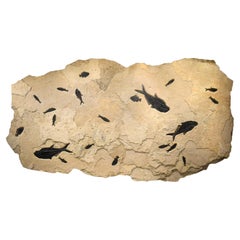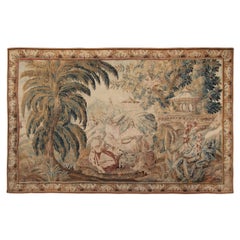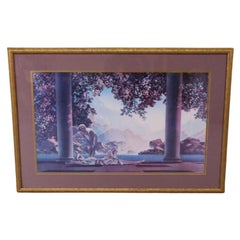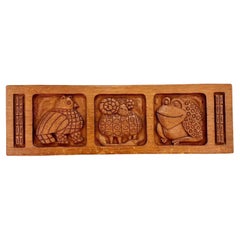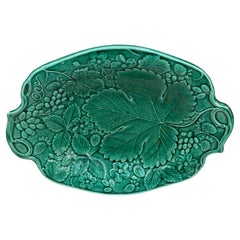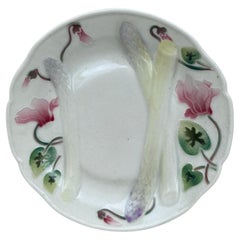Continental US - Decorative Art
2010s American Continental US - Decorative Art
Limestone
1880s Belgian Antique Continental US - Decorative Art
Wool, Silk
1980s American Vintage Continental US - Decorative Art
Paper
Mid-20th Century American Mid-Century Modern Continental US - Decorative Art
Wood
1890s English Victorian Antique Continental US - Decorative Art
Ceramic
Early 1900s French Art Nouveau Antique Continental US - Decorative Art
Majolica
Mid-20th Century Dutch Mid-Century Modern Continental US - Decorative Art
Ceramic
1920s French Art Deco Vintage Continental US - Decorative Art
Ceramic, Faience, Majolica
Late 20th Century Mexican Mid-Century Modern Continental US - Decorative Art
Sandstone
1980s American Modern Vintage Continental US - Decorative Art
Glass, Wood, Paper
Early 20th Century Italian Mid-Century Modern Continental US - Decorative Art
Metal, Brass
1880s French Country Antique Continental US - Decorative Art
Ceramic
1910s French Country Vintage Continental US - Decorative Art
Ceramic, Faience
Late 19th Century English Antique Continental US - Decorative Art
Canvas
1960s Mexican Modern Vintage Continental US - Decorative Art
Wood, Paper
18th Century Belgian Antique Continental US - Decorative Art
Wool, Silk
Early 1900s French Rococo Antique Continental US - Decorative Art
Wood
1950s American Vintage Continental US - Decorative Art
Canvas
18th Century Dutch Folk Art Antique Continental US - Decorative Art
Ceramic
Late 19th Century German Baroque Antique Continental US - Decorative Art
Gesso, Canvas, Wood
Late 19th Century French Antique Continental US - Decorative Art
Faience
1890s English Victorian Antique Continental US - Decorative Art
Ceramic
Early 1900s French Art Nouveau Antique Continental US - Decorative Art
Ceramic, Faience, Majolica
Early 20th Century Chinese Continental US - Decorative Art
Glass, Wood, Paper
20th Century Anglo Raj Continental US - Decorative Art
Fabric, Wood
1880s English Victorian Antique Continental US - Decorative Art
Ceramic, Faience, Majolica
1960s American Modern Vintage Continental US - Decorative Art
Canvas
1950s French Mid-Century Modern Vintage Continental US - Decorative Art
Ceramic, Faience
1980s American Modern Vintage Continental US - Decorative Art
Paper
Early 20th Century Neoclassical Continental US - Decorative Art
Gold Leaf
1970s French Mid-Century Modern Vintage Continental US - Decorative Art
Ceramic
Early 20th Century Swedish Other Continental US - Decorative Art
Wood, Paper
1890s French French Provincial Antique Continental US - Decorative Art
Ceramic
1980s American Folk Art Vintage Continental US - Decorative Art
Metal
Mid-20th Century Norwegian Mid-Century Modern Continental US - Decorative Art
Brass
19th Century French Louis XVI Antique Continental US - Decorative Art
Wood
20th Century American Mid-Century Modern Continental US - Decorative Art
Leather, Wood, Ash
1890s Belgian Rustic Antique Continental US - Decorative Art
Ceramic
1930s French Art Deco Vintage Continental US - Decorative Art
Ceramic, Faience
1980s Native American Vintage Continental US - Decorative Art
Paper, Glass, Wood
1970s German Modern Vintage Continental US - Decorative Art
Acrylic
1940s French Rustic Vintage Continental US - Decorative Art
Faience
1890s French Rustic Antique Continental US - Decorative Art
Ceramic
1890s English Chinoiserie Antique Continental US - Decorative Art
Ceramic
Early 1900s French Art Nouveau Antique Continental US - Decorative Art
Ceramic, Majolica
1880s French Rustic Antique Continental US - Decorative Art
Ceramic
21st Century and Contemporary British Chinoiserie Continental US - Decorative Art
Paper
Mid-20th Century French Louis XIV Continental US - Decorative Art
Porcelain
20th Century Unknown Continental US - Decorative Art
1890s French Rustic Antique Continental US - Decorative Art
Ceramic
1890s French Rustic Antique Continental US - Decorative Art
Ceramic
21st Century and Contemporary American Modern Continental US - Decorative Art
Wood
Late 20th Century Turkish Adirondack Continental US - Decorative Art
Wool
Early 1900s French French Provincial Antique Continental US - Decorative Art
Ceramic
1950s Vintage Continental US - Decorative Art
Wood
1890s French Victorian Antique Continental US - Decorative Art
Ceramic
1890s English Late Victorian Antique Continental US - Decorative Art
Canvas, Wood, Giltwood
20th Century Persian American Colonial Continental US - Decorative Art
Wool
Late 20th Century Country Continental US - Decorative Art
Canvas, Mahogany
1990s American American Classical Continental US - Decorative Art
Glass, Wood, Paper
Read More
At Colonial Williamsburg, Everything Old Is New Again
With the help of a new director, the Virginia institution's folk art and decorative arts museums are undergoing extensive upgrades.
New York’s Hirschl & Adler Showcases the American Workmanship and Design Panache of Neoclassical Treasures
The gallery's latest exhibition proves that museum-quality pieces entice and inspire, whether in traditional or more modern interiors.
